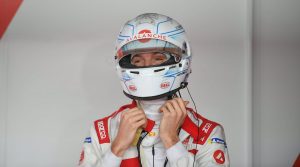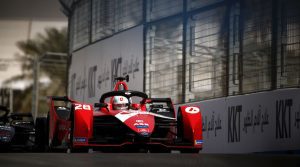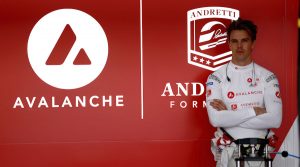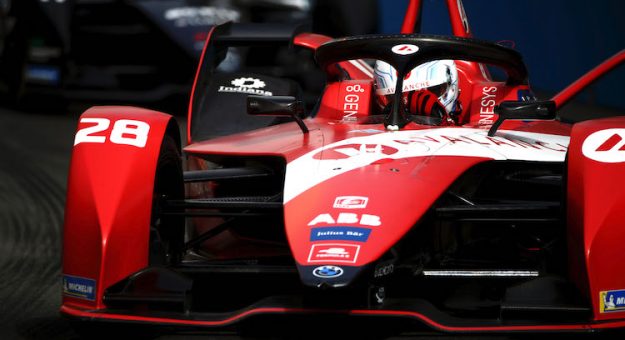American fans may not have a full-time American driver in Formula 1 to cheer for, but they do in the FIA ABB Formula E world championship.
Oliver Askew has moved from the NTT IndyCar Series to the international series, where he is driving one of the two Andretti Formula E cars alongside British wheelman Jake Dennis.

After finishing on the podium in an IndyCar race on the oval at Iowa Speedway in 2020, which was only his fifth IndyCar start, Askew was involved in a bad accident during the 2020 Indianapolis 500.
Now 25, he is healthy and more than ready to tackle the eighth season of Formula E, which features a 16-race/10-event schedule. He’s in the No. 28 BMW iFE.021 for his rookie season in the global series for electric-powered race cars.
“There have been Americans who did one-offs, but I’m the first American to do the Formula E series full time and the only American in it right now,” Askew explained. “Formula E has a massive international fan base. The drivers are former Formula 1 drivers, up-and-coming drivers from the different formula car series and Le Mans legends. The competition draws the fans, and the technical aspects of the series are a little more interesting for younger fans. I think it’s a growing series, as every year it gets bigger and bigger.”
The international flavor of the series appeals to Askew, who won the 2019 Indy Lights championship driving for Andretti Autosport two years after capturing the USF2000 championship with Cape Motorsports and three years after claiming the Team USA scholarship. He holds dual citizenship in the United States and Sweden.

Askew had a challenging rookie season in IndyCar with Arrow McLaren SP in 2020, and after the Indy 500 accident he drove only five IndyCar races last season among Arrow McLaren SP, Ed Carpenter Racing and Rahal Letterman Lanigan Racing.
He’s looking at this year’s Formula E season for a fresh start on an international stage.
“Most of the series I’ve raced in in the past have just been in North America,” noted Askew. “It’s a perk of the job to travel and see new places and new cultures.”
He’s especially looking forward to the race in Monaco on April 30 and the New York City EPrix doubleheader in Brooklyn on July 16-17.
“To race in Monaco will be very special and Brooklyn will be my home race as an American,” he noted.
Prior to the season-opening doubleheader at the Riyadh street circuit in Diriyah, Saudi Arabia, in late January, Askew had driven a Formula E car for only three and a half days of testing with Andretti.
“Formula E cars are quite a bit slower than an Indy car because they don’t have any downforce and they’re on street tires (Michelins), but they feel quick,” he said.
Most of the events are run on street circuits.
“I think I’m up to the challenge,” Askew added. “I’ve never felt weak on street circuits. It’s hard to say how it will suit my driving style because I have so little experience so far, but I’m confident in myself and I think we can do a good job this year. There are a couple of rookies in the series in addition to me and they’ll be going through the same learning curve as I am.”
Almost all of the circuits will be new to him and he will have to get to know his fellow competitors, but Andretti has competed in the series since its inception in 2014 and has seven victories. BMW pulled out of the series last year, but Andretti will continue to use BMW technology.
Askew’s engineer is Daniel Grunewald. They haven’t worked together in the past, but Askew said “he comes from a wealth of experience in DTM and also in Formula E with many different manufacturers.”

Askew says the handling of a Formula E car and an Indy car are as different as night and day.
“The Formula E car virtually doesn’t have any downforce, where an Indy car has a substantial amount,” he said. “It’s a stark contrast.
“There are no gears in a Formula E car and it’s a lot more technical. In an Indy car, I may change my fuel maps in the cockpit. In a Formula E car, we can change the setup from the steering wheel, as well as choose different race strategies to determine how we’re using the energy available throughout the race.
“We have a certain amount of energy available and we can’t use too much of it or not enough of it,” Askew explained. “It’s very critical. If your calculations are off, you could run out of power 100 yards short of the finish line. And if you cross the line with one or two percent more energy remaining, that is energy you could have used to pass someone. Ideally, you cross the line with zero percent energy left.
“The car has an assistant in it to help make sure I will get to the end of the race,” he added. “It will let me know if I have to conserve energy. The guys on the pit wall have a broader understanding of how the race will play out with safety cars, etc. They provide more of a human reaction to make sure we get to the end.
“Formula E cars also use street tires, which have a lot less grip than the slicks I’m used to racing on,” Askew continued. “During the race, we’re only using the rear axle to accelerate and deaccelerate and kinetic energy to replenish the battery. That’s only being done off the rear axle, so you have to really look after the rear tires during a race.”
Another thing that will be different for him is that Formula E utilizes standing starts. “I have only done them in shifter-kart racing,” he said.
Formula E’s founding mission is to accelerate the transition to zero emissions mobility by testing new technologies on the race track before they’re rolled out on the assembly line.
Formula E partners with the United Nations Environment Program to spotlight the benefits of the global shift to e-mobility. This aligns with the Enel X commitment to a better, cleaner future for all.
Of course, it’s a lot quieter than most motorsports and it seems to generate strong emotions from fans, who either like it or don’t like it. What does Askew say to the latter?
“If you don’t like it, I’m not going to change your opinion,” he said wisely. “The people who don’t like it, love another particular type of racing and they might not be as open-minded about racing in the future. But if they give it a chance and watch a couple of races, I think they’ll discover the racing is just as good as other series, and it’s definitely more competitive than Formula 1,” he said. “There are 22 of us drivers and we’re all paid, professional drivers. No one is paying to race in Formula E, which says a lot. It’s an FIA-sanctioned series as well and I feel it’s very professional.
“If you’re against Formula E, then you’re against progress and technological advancements,” he continued. “You’re against change and a better, greener world.”
Due to all the globe-trotting the Formula E series requires, Askew will primarily live out of a suitcase. “My family is in Florida and I also have family in Sweden and Spain,” he noted. “It doesn’t make sense to make a place of my own when I’ll be traveling so much this year.”
He still plans to find some time for fun.
“I’ve gotten into dee-jaying lately,” Askew said. “I enjoy playing music and mixing music at house parties. It’s fun. I play guitar and I just enjoy music. I’m mixing house music or dance music. If I could only listen to one genre for the rest of my life, it would have to be grunge rock or classic rock.”
He’s also really into chess.
“I play online, and in person with a friend,” he said. “I’ve played with Scott Speed a few times.
“I think there are many lessons that can be learned from playing chess and learning the game,” Askew added. “Those lessons include a way of thinking and analyzing things that can be very helpful. It’s a powerful game and it works out your brain in many ways. My mind is constantly turning, and chess is one game that forces you to focus on what you’re doing at the moment.”
That’s a lot like racing.
“Yes, except racing is my job,” he said with a smile.
